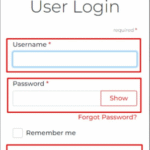In an age defined by digital transformation and interconnectivity, the significance of robust cybersecurity measures cannot be overstated. As reliance on online platforms, cloud services, and interconnected networks grows among businesses, governments, and individuals, the necessity for effective and secure IAM identity access management services has emerged as a cornerstone of contemporary cybersecurity. This article examines the convergence of efficiency and security within the realm of IAM services, exploring their benefits, upcoming trends that will shape the landscape, and concluding with the pivotal role that IAM plays in securing our digital future.
Advantages of Efficient Identity and Access Management Services:
Simplified Workflows: One of the principal benefits of efficient IAM services lies in streamlining workflows. Traditional manual procedures for onboarding new personnel, granting permissions, and revoking access can be time-consuming and prone to errors. Through automation of these processes, organizations can ensure that the correct individuals gain access to appropriate resources at the right times, reducing administrative burdens and enhancing overall productivity.
Enhanced User Experience: A smooth and user-friendly experience is critical for both employees and customers. Cumbersome login methods, numerous sets of credentials, and perplexing access controls can exasperate users and impede efficiency. IAM solutions offering single sign-on (SSO) and self-service portals empower users to access the resources they need without grappling with multiple usernames and passwords, thereby fostering improved satisfaction.
Mitigated Risks: Effective IAM systems significantly contribute to risk mitigation. They play a substantial role in thwarting unauthorized access, data breaches, and internal threats. Role-based access controls ensure that users possess only the permissions requisite for their roles, limiting potential damage arising from compromised credentials. Furthermore, automated monitoring and reporting aid in identifying and promptly addressing anomalies, minimizing the impact of security incidents.
Compliance and Auditing: In today’s regulatory landscape, organizations must conform to diverse compliance standards and regulations concerning data protection and privacy. IAM services facilitate compliance by offering audit trails, reporting mechanisms, and ensuring that access controls align with regulatory prerequisites. This not only helps organizations evade penalties but also fosters trust among customers and partners.
Cost Savings: Although initial implementation of IAM systems may necessitate investment, the long-term cost savings are significant. Automated onboarding and offboarding processes alleviate the burden on IT teams, allowing them to focus on more strategic endeavors. Additionally, the reduction in security incidents and breaches results in savings related to incident response, mitigation efforts, and potential legal consequences.
The Future of Identity and Access Management Services:
The realm of IAM services is perpetually evolving to address the challenges posed by an ever-changing cybersecurity landscape. Several trends are poised to shape the future of IAM:
Zero Trust Architecture: Traditional security models based on perimeter defenses are inadequate in today’s threat landscape. Zero Trust Architecture operates on the principle of “never trust, always verify.” IAM will play a pivotal role in implementing this approach by continuously authenticating and authorizing users and devices, irrespective of their position within the network. These strategies ensures that even if a threat sneak into the perimeter, it remains restricted within the network.
Decentralized Identity: The need of blockchain and decentralized technologies has paved the way for users to employ greater control over their digital identities. Decentralized identity models empower users to securely manage and govern their personal information, diminishing reliance on centralized identity providers. This trend aligns with the growing emphasis on user privacy and ownership of data.
API Security: With a rising number of applications and services relying on APIs, securing these interfaces becomes paramount. IAM solutions will evolve to furnish robust API security measures, guaranteeing that solely authorized entities can access and interact with APIs. This approach precludes unauthorized API access and curtails the risk of breaches linked to APIs.
Privacy-Centric IAM: The introduction of regulations like the General Data Protection Regulation (GDPR) and the California Consumer Privacy Act (CCPA) has propelled data privacy into the spotlight. Future IAM systems will need to incorporate features enabling users to grant explicit consent for data sharing, alongside mechanisms for data minimization. This transition toward privacy-centric IAM ensures that user data is treated responsibly and in alignment with regulations.
Convergence with IoT: The expansion of the cyber threat landscape through the Internet of Things (IoT) demands a pivotal role for IAM in permitting solely authorized devices to access the network. As more IoT devices interconnect, they will require secure authentication and authorization mechanisms, in harmony with the broader IAM framework.
Conclusion:
The future of IAM is promising, as it embraces technologies such as zero trust architecture, decentralized identity, and advanced authentication methods. This evolution aligns with the overarching objective of furnishing a secure yet user-friendly digital environment. By striking a balance between efficiency and security, IAM services pave the way for a more secure digital future, where organizations and individuals can confidently engage in the digital realm without jeopardizing their data or privacy. As technology advances, IAM services will continue to stand at the forefront of safeguarding our interconnected world.

Hy Vee Huddle: A Complete Informational Guide

The Connection Between Accounting Firms And Regulatory Compliance

Why Smart Startups Choose Custom AI Business Solutions Today

The Digital Lifeline: How Technology is Revolutionizing Addiction Recovery

From Clicks to Clients: Why Trust-First Local SEO Wins the Long Game

Forgot Your iPhone Password? Here’s How to Unlock It Easily

How Strikes and Step Through Bikes Are Using Tech for Better Range

NoteGPT AI Image Generator: Transforming Branding and Marketing









